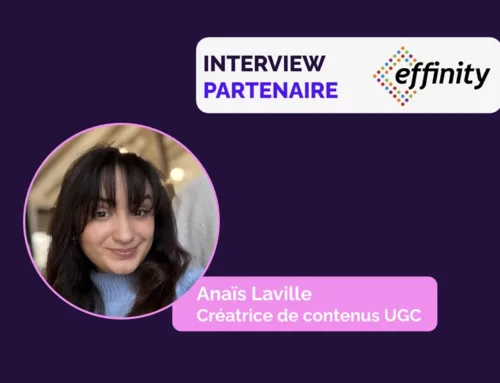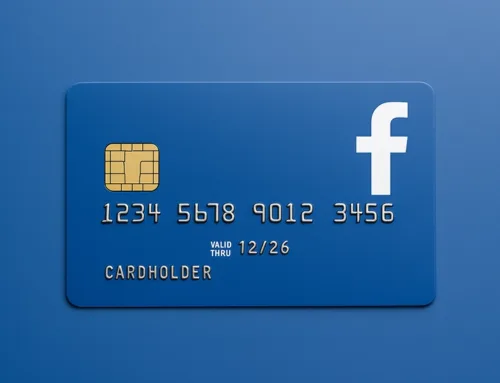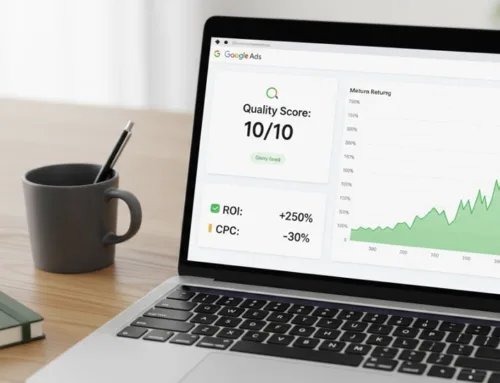In today’s media landscape, ignoring YouTube can be a strategic mistake. The platform has become a media ecosystem where brands and consumers meet, influence and convert. The stakes are not insignificant: as a Google study reveals, 70% of YouTube users say they have bought a brand after seeing it on the platform.
At the same time, consumer habits have changed radically: attention is volatile, buying paths are fragmented, and traditional advertising approaches struggle to keep pace. Faced with this new paradigm, how do you create YouTube ads that not only capture attention, but hold it and turn it into action? The answer advocated by YouTube (and therefore Google) is simple, structured and data-driven: the ABCD method. This strategic framework, made up of four pillars – Attract, Brander, Connect, Direct – offers a clear roadmap for designing impactful content, perfectly adapted to the digital age.
Here, the experts at our Youtube Ads agency decipher the components of this method. You’ll discover how to structure your stories for maximum impact, how to integrate your brand in a memorable way, how to forge an emotional bond with your audience and, finally, how to encourage viewers to take action.
And if you’re still hesitating about advertising on YouTube, read our article Why advertise on YouTube? which will give you good reasons to launch your brand on this media platform with considerable reach.
YouTube ads: from the traditional narrative arc to the “beating heart” structure
The evolution of video platforms has brought about a profound transformation in narrative structures. The classic linear narrative, designed for a captive audience in front of a TV screen, is no longer optimal for YouTube, an environment where every user is a click away from the next video. Attention has become the most precious resource, and the way to conquer it has had to be reinvented.
To maintain engagement, advertisers need to move away from a slow ramp-up to a more dynamic approach, designed for immediate and sustained impact. This new narrative arc, known as the “beating heart”, is at the heart of YouTube performance. This metaphor illustrates the rhythm of advertising: a series of peaks of intensity and quieter moments, designed to maintain engagement at all times, like the beating of a heart.
The table below highlights the fundamental differences between these two approaches.
| Traditional narrative arc | New narrative arc (“beating heart”) |
| Slow introduction: the narrative takes its time to set the scene and establish the characters. | Strong start: a striking visual or narrative element is introduced from the very first second to hook the viewer. |
| Gradual build-up: tension or plot builds in a linear, predictable way. | Multiple peaks: the intensity varies with several high points to maintain engagement throughout the video. |
| Single climax: a single climax where the essential message or emotion is concentrated. | Unexpected changes: twists and turns or changes of pace that surprise viewers and rekindle their attention. |
| Revelation and branding at the end: the brand and offer are often revealed at the very end of the ad. | Scattered brand cues: the logo, colors or product are subtly and repeatedly integrated. |
This new narrative arc is designed to respond to new user behaviors. By capturing attention from the very first moment, and by continually stimulating it, it maximizes the chances of the message being seen and remembered. It is precisely to implement this structure effectively that the ABCD method was developed.
ABCD method: the four pillars of success on YouTube Ads
The ABCD(Attract, Brand, Connect, Direct) methodology is not just a list of tips, but a practical, proven guide to designing effective advertising creatives from A to Z. Each pillar answers an essential question for transforming an ordinary viewer into a potential customer.
A for Attract: grab immediate attention
The objective of this first step is fundamental: in an environment saturated with content, give the consumer a reason to stop and look. The first five seconds are crucial. To achieve this, four tactical rules stand out for their effectiveness.
- Framing: use tight framing on the subject, whether it’s a product or a person.
- The strategic reason: a close-up, clear shot is easier for the brain to process, making it easier to understand and keeping it engaged, especially on mobile screens.
- Humanize: open the video with people on screen. If it suits your scenario, have them address the audience directly.
- The strategic reason: faces immediately attract attention, increase emotional motivation and foster commitment.
- Surprise: use images that are surprising, pleasing, unexpected or memorable.
- The strategic reason: visuals that provoke a thought or emotion in the first five seconds are directly linked to longer viewing times on YouTube.
- Rhythm: aim for at least two different shots in the first five seconds.
- The strategic reason: rapid initial editing is a positive factor for adrecall and brand recognition.
B for Brander (integrating the brand): ensuring memorability
A creative video is useless if the viewer doesn’t remember the brand behind it. Brand integration must be natural, visible and audible, so that the consumer associates the message with your company.
- Introduce: present your brand or product in the first five seconds.
- The strategic reason: early integration orients the viewer and facilitates information processing, which increases engagement.
- Reinforce: adapt the placement of your logo to your objective.
- The strategic reason: for memorability, integrate the logo into the story or directly onto the product. For consideration, use a text inlay, a persistent watermark or an overlay.
- Differentiate: use visual and audio elements that are unique to your brand (colors, jingles, mascots, slogans).
- The strategic reason: these brand assets are powerful drivers for creating strong mental associations and differentiating you from the competition.
- Mention: if people are on screen, have them mention your brand name.
- The strategic reason: audio mentions by on-screen people generate better results for memorization and consideration than voice-over mentions.
C for Connect: create an emotional or functional link
This stage aims to make the consumer feel or think something. This is where consideration comes into play, transforming simple advertising exposure into genuine interest in the brand.
- Engage: use emotional levers like humor, action or intrigue when it suits your brand.
- The strategic reason: humor is the most effective creative element for improving an ad’s receptivity. What’s more, the tension and release patterns in the narrative foster strong emotional motivation.
- Integrate: put people at the heart of the story, whether they’re celebrities, influencers or “people like me”.
- The strategic reason: people not only help hook viewers at the outset, they also facilitate connection and are associated with better results across all brand metrics.
- Combine: combine functional (explaining the product’s usefulness) and emotional messages.
- The strategic reason: a functional message is a positive factor for all brand indicators. When it also conveys the emotion of brand use, it is associated with better results across the marketing funnel.
D for Direct: incite to action
The ultimate aim of all advertising is to encourage the consumer to take concrete action. This final step must be clear, direct and convincing.
- Incentivize: display offers and calls to action using text boxes, simple animations or voice-overs.
- The strategic reason: this practice is positively correlated with recall, consideration and purchase intent.
- Guide: use specific, direct calls to action.
- The strategic reason: clear instructions like “Visit the site”, “Register” or “Buy now” are positively correlated with all brand performance indicators.
- Inspire: create a sense of urgency with limited-time or limited-quantity offers.
- The strategic reason: scarcity or urgency tends to pique interest and increase the perceived value of the offer.
These four pillars, when integrated coherently, form a powerful structure that maximizes the effectiveness of every second of your campaign.
Implementing ABCD: an action plan for your YouTube Ads campaigns
Applying the ABCD method doesn’t just happen. It’s a structured process that needs to be integrated into every stage of creating a video campaign, from the initial brief to the final adjustments in post-production. Here’s a practical guide to ensure that these principles are at the heart of your creative process.
Phase 1: the strategic brief – laying the foundations for performance
This phase is the blueprint for your success. This is where strategic intent is defined. Planning ahead for an emerging narrative arc and mobile-optimized design avoids costly modifications and missed opportunities later in the process.
- Plan an emergent narrative arc (“beating heart”) to maintain attention.
- Design your creation from the outset for mobile consumption and with sound activated.
- Think about the emotional and functional levers you’ll use to create a connection with the audience.
- If the main objective is action, make sure the message focuses on the offer and the call to action.
Phase 2: Pre-production – translating strategy into concrete assets
Here, the master plan is transformed into tangible assets. Decisions taken at this stage, such as the planning of tight shots or the integration of brand elements, have a direct impact on the effectiveness of your advertising with the 70% of viewers on mobile.
- Plan tight shots of your subjects (people or products) to ensure visual clarity.
- Plan the integration of your logo and brand elements (colors, typography) directly into the story or on the products. Integrate your brand’s unique visual elements.
- Decide who will mention the brand: prefer people on screen to voice-overs for greater impact.
Phase 3: Post-production – optimizing the final impact
This is the final optimization stage, where impact is maximized. Editing is where the “beating heart” narrative really comes to life, where every second is refined to ensure that the viewer’s attention never wavers.
- Keep the pace fast, especially at the beginning, and make sure that people appear on screen in the first few seconds.
- Check that the brand or product is introduced within the first 5 seconds.
- Place your logo as an overlay, text inlay or persistent watermark.
- Integrate calls to action clearly and visibly via animations, text overlays or voice-overs.
Technical basics to remember for YouTube ads
Beyond narrative structure, two of YouTube’s technical realities must guide every creative decision:
- Design for mobile: with 70% of global viewing time taking place on mobile devices, it’s imperative to use tight framing, fast pacing, large text and high contrast to ensure your ad is perfectly visible and readable on a small screen.
- Build with sound: unlike other platforms, 95% of YouTube videos are watched with sound activated. Take advantage of audio elements (music, dialogue, sound effects) to reinforce your message and complement what’s happening on screen.
Success with YouTube Ads depends not only on creative brilliance, but also on the rigorous application of these strategic and technical principles at every stage of the process.
Structured creativity drives ad performance on Youtube
The ABCD method is not a magic formula, but a powerful strategic framework that channels creativity to make it more effective and measurable. The aim is not to curb creativity, but to arm marketing for maximum return on investment.
In a media ecosystem where attention is the most precious currency, every second counts. The ABCD method ensures that these seconds are used to their full potential to catch the eye, anchor the brand in people’s minds, create an authentic connection and, ultimately, provoke action and conversion. A method that our dedicated Ads studio is already putting into practice.
By adopting this rigorous, consumer-centric approach, brands can transform their video campaigns from a simple broadcast to a truly engaging and profitable conversation.




